Direct-Drive vs Clutch Motor Sewing Machines – What’s the Difference?
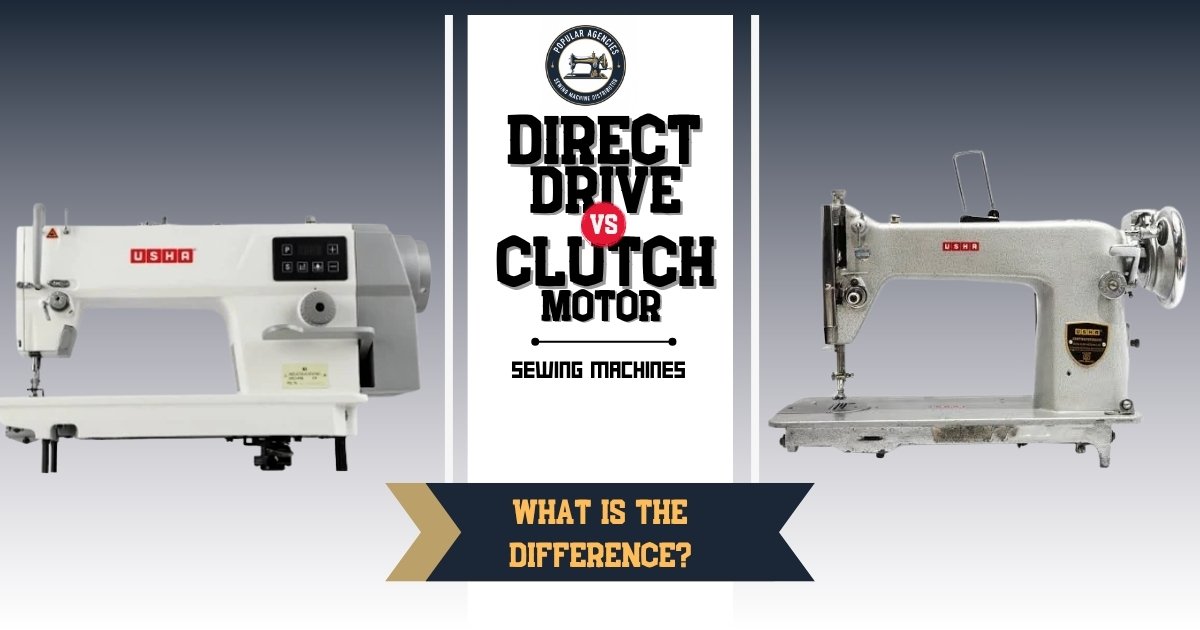
If you’re buying a new sewing machine for your tailoring shop or factory, you’ll often hear two terms — Direct-Drive and Clutch Motor. Both power systems are widely used in industrial sewing machines, but they differ greatly in performance, efficiency, and comfort.
Understanding these differences can help you choose a machine that saves power, reduces noise, and matches your workload. In this comparison, we’ll clearly explain the Direct-Drive vs Clutch Motor sewing machine difference so you can make a confident decision.
1. The Basics – How Each Motor Works
Clutch Motor Sewing Machines
Clutch motor machines have been around for decades. In this setup, the motor is a separate unit mounted under the table and connected to the machine through a belt. The motor runs continuously once powered on, even when the operator isn’t stitching.
When you press the pedal, the clutch engages and drives the machine head to start stitching. It’s a time-tested mechanism known for reliability and power, but it consumes more electricity and generates more noise.
Direct-Drive Sewing Machines
In a direct-drive system, the motor is built directly into the sewing head. Instead of using a belt, it drives the machine shaft directly, offering smoother and faster response. The motor only runs when you press the pedal, which saves energy and reduces vibration.
Modern direct-drive motors are brushless and electronically controlled, offering high precision and less maintenance — making them the new standard for industrial setups.
2. Power & Speed Comparison
| Feature | Clutch Motor | Direct-Drive |
|---|---|---|
| Motor Type | Induction Motor | Brushless Servo Motor |
| Typical Power | 400–750W | 400–550W |
| Speed Range | 2800–4000 SPM | Up to 5000 SPM |
| Start/Stop Response | Slower | Instant |
| Torque | High | Adjustable |
| Energy Use | Constant | On-demand |
Verdict:
Direct-drive machines provide faster speed and better energy control, while clutch motors deliver raw torque suitable for extremely thick fabrics or heavy-duty work.
3. Energy Efficiency
Energy efficiency is where direct-drive motors completely outshine clutch motors.
- Clutch Motor: Runs continuously, consuming power even at idle. Average daily consumption can be 50–60% higher for long work shifts.
- Direct-Drive: Operates only when stitching. Many models like Usha S2 Direct Drive SNLS or Jack F5 claim up to 70% energy savings compared to conventional systems.
If you’re running a tailoring unit or garment workshop, switching to direct-drive machines can significantly reduce your electricity bill over time.
4. Noise & Vibration Levels
Clutch motors produce a constant humming sound because the motor runs continuously. Prolonged exposure can cause fatigue for operators working long hours.
Direct-drive motors, however, are virtually silent at idle and far smoother during operation. The integrated motor design minimizes vibration, leading to a more comfortable stitching experience and fewer skipped stitches.
Verdict:
For quieter, cleaner work environments, direct-drive sewing machines are the clear winner.
5. Maintenance & Lifespan
Clutch Motor
- Requires periodic belt adjustments or replacements.
- Generates heat and dust, requiring occasional cleaning.
- Bearings and clutch pads may wear out over time.
Direct-Drive Motor
- Virtually maintenance-free with brushless design.
- No belt, less friction, and cooler operation.
- Longer lifespan with fewer moving parts.
Direct-drive systems simplify maintenance, reduce downtime, and improve long-term reliability — a major advantage for busy tailoring businesses.
6. Control & Precision
This is where modern direct-drive machines shine.
- Speed Control: Direct-drive models allow adjustable speed settings, ideal for beginners and detailed work.
- Needle Positioning: Built-in sensors automatically stop the needle up or down, improving accuracy during turns and corners.
- Instant Start/Stop: Reduces thread breakage and improves consistency.
Clutch motors lack such control; speed depends solely on pedal pressure, which can be challenging for new operators.
Verdict:
If precision stitching and fabric handling are your priorities, go for a direct-drive machine.
7. Cost Comparison
| Category | Clutch Motor Machines | Direct-Drive Machines |
|---|---|---|
| Starting Price | ₹12,000 – ₹15,000 | ₹18,000 – ₹25,000 |
| Power Consumption | Higher | Lower |
| Long-Term Cost | More maintenance, higher electricity bills | Lower operating cost |
| Value for Money | Affordable initially | Better ROI over time |
While clutch motor machines are cheaper upfront, direct-drive models quickly pay back the price difference through energy savings and reduced maintenance.
8. Ideal Applications
| Use Case | Best Choice | Reason |
|---|---|---|
| Heavy leather, upholstery | Clutch Motor | High torque at low speed |
| Garment manufacturing | Direct-Drive | Speed, efficiency, automation |
| Boutique tailoring | Direct-Drive | Compact, quiet, user-friendly |
| Long working hours | Direct-Drive | Low noise, cool operation |
| Basic stitching & repairs | Clutch Motor | Simple and low-cost |
Summary:
- Choose Direct-Drive for daily use, production, and precision.
- Choose Clutch Motor only if you work with heavy leather or legacy setups.
9. Real-World Example – Jack F5 vs Traditional Clutch Models
To understand the impact, let’s compare the Jack F5 Direct-Drive with a typical clutch-motor industrial machine.
- Jack F5: Up to 5000 SPM, 550W power, integrated LED, energy saving up to 70%, no belt noise, auto lubrication.
- Old Clutch Model: 4000 SPM, continuous motor noise, higher heat, belt wear every few months.
Operators switching to direct-drive machines report faster output, less fatigue, and lower electricity usage — proving how technology has reshaped the industry.
10. Final Verdict
If you value speed, efficiency, precision, and operator comfort, the direct-drive sewing machine is the clear winner.
Its smart motor, reduced vibration, and energy savings make it ideal for both small tailoring shops and industrial garment units.
Clutch-motor machines still serve a purpose for heavy materials or traditional workshops, but they’re slowly being replaced by modern direct-drive systems that offer more control, less maintenance, and better results.
At Popular Agencies, you’ll find a complete range of Usha, Jack, and Revo direct-drive sewing machines — all with doorstep demo, warranty, and after-sales service. Whether you’re upgrading from an old model or setting up a new workshop, investing in direct-drive technology is the smart move for 2025 and beyond.
Categories
- Sewing Machines (9)
- Uncategorized (2)
News
Newsletter
Frequently Asked Questions
What is the main difference between direct-drive and clutch motor sewing machines?
Direct-drive motors are built into the machine head and run only when stitching, while clutch motors use belts and run continuously.
Which sewing machine is more energy efficient?
Direct-drive machines consume up to 70% less electricity compared to clutch motors.
Are clutch motor machines still worth buying?
Yes, for very heavy materials like leather or canvas, clutch motors provide strong torque at low speeds.
Which machine is better for beginners?
Direct-drive machines are easier to operate and offer better control, making them ideal for beginners and professionals alike.
Do direct-drive machines need regular maintenance?
Not much — they’re almost maintenance-free compared to clutch motors, which require belt adjustments and cleaning.

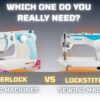

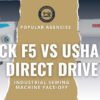
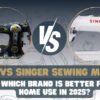
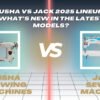


Add comment